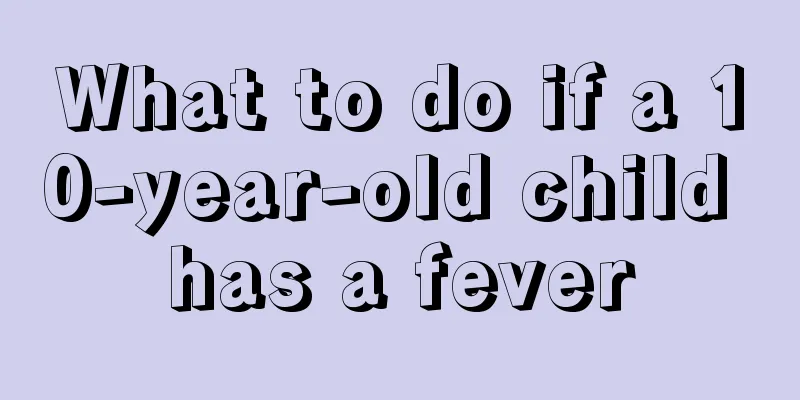Can children with acute rash be blown in the wind?

|
Children should not be exposed to wind when they are in emergency treatment for this disease, because it will cause the child to cry, aggravate the condition, and cause the baby to have symptoms of a cold. Therefore, it is best not to expose the child to wind when they are in emergency treatment for this disease. It is best for us to keep the indoor air flowing. If it is summer, we should change children's clothes frequently and blow air before eczema comes to prevent the occurrence of eczema. 1. Can children with roseola be exposed to the wind? In fact, there are many opinions on the question of whether children with roseola infantum can be exposed to the wind. The elderly say that children will be more likely to tear up after being exposed to the wind. In fact, this statement has no scientific basis. However, if you have a rash, you must rest more and try to reduce going out. Mothers whose babies have had rashes know that the biggest characteristic of roseola infantum is that the rash appears when the fever subsides. Some mothers say that if the baby is exposed to cold wind, it may affect the appearance of the rash. Some mothers also said that if the baby is exposed to cool wind, it is easy for the baby to catch a cold, which will also affect the baby's physical health. However, when my baby had a rash, I took him out because it was summer and the weather was hot and humid. It would be very uncomfortable for the baby to stay at home. But the baby did not feel any discomfort due to the wind. Therefore, those who say that babies should not be blown by the wind when they are in the pediatric emergency room are incorrect. But some people also say that you can get some fresh air before the rash appears, but you cannot get some fresh air after the rash appears. In fact, it is not wrong to be cautious like this. So, in fact, you should choose whether to go out based on the baby's own situation. For example, my baby had a rash in the summer, and even if there was wind, it would not be cold, so there would be no impact. But if it is in the cold winter, as some of the statements mentioned above say, the baby may catch a cold and thus aggravate the condition. 2. What are the symptoms of roseola infantum The infection usually occurs within 2 years of age, especially within 1 year of age. It can occur in all seasons, and the chances of being infected more than twice in a lifetime are very small. The incubation period is generally 5 to 15 days. The clinical characteristics are sudden onset, high fever at the beginning of the disease, body temperature reaching 39-40 degrees, lasting for 3-5 days and then dropping suddenly, and rash appears after the fever subsides. 1. Fever period High fever often occurs suddenly and lasts for 3 to 5 days. High fever may be accompanied by convulsions, irritability, coughing, vomiting, and diarrhea. Some children may even have convulsions when they have a high fever. Apart from this, the cold symptoms are not obvious, the spirit and appetite are still good, but there will be mild congestion of the throat and tonsils and mild enlargement of the superficial lymph nodes in the head and neck. The manifestation is high fever out of proportion to the mild symptoms and signs. 2. Rash period On the 3rd to 5th day of the disease, the body temperature suddenly returns to normal, and a rash appears at the same time or later. The rash is scattered, rose-red macules or maculopapules, which fade when pressed and rarely fuse. It first appears on the trunk and then quickly spreads to the neck, upper limbs, face and legs. The rash lasts for 24 to 48 hours and then disappears quickly, without any pigmentation or peeling. Diagnosis is more difficult during the febrile period, but it should be considered given that the child's systemic symptoms are mild and inconsistent with the high fever, and the total number of cells in the peripheral blood is reduced. Once the high fever subsides suddenly and a rash appears, the diagnosis is easy to make. Within 3 days of the onset of symptoms, HHV-6 can be isolated from peripheral blood lymphocytes and saliva, or the viral genes can be detected using nucleic acid hybridization technology for pathogen diagnosis. |
<<: What to do if your child gets a stye
>>: Premonitions of childhood rash
Recommend
What to do if children have a runny nose and cough
There are many common diseases among children. Wh...
How to treat allergic conjunctivitis in children
Children's eyes are relatively fragile, and t...
What should I do if my baby is fussy at night?
I believe that every mother will encounter the pr...
Knowledge about measuring trace elements for children
There are trace elements in everyone's body, ...
Why does my baby often scratch his ears?
Every move of the baby makes parents very happy, ...
How to remove phlegm from children’s throats?
Many children do not know how to get rid of phleg...
What happens when little red spots with white tips appear on the baby’s face?
Every teenager will get acne on his face during p...
Causes of dysphagia in newborns
Parents need to provide extra care and health car...
Children have repeated fevers, beware of these three factors
Because children's physical fitness is lower ...
Can a one-year-old baby eat kelp?
There are many things to pay attention to when it...
What soup should children drink for sore throat?
The problem of sore throat is not only encountere...
Why does my baby always scratch his ears?
When a baby is feeling uncomfortable, there will ...
What to do if a child has constipation and anal fissure
Don’t underestimate the problem of constipation. ...
How to supplement children's anemia
Anemia in children is a comprehensive symptom. Th...
How to correct a baby's big right side face
Chinese people pay attention to symmetry, which i...









